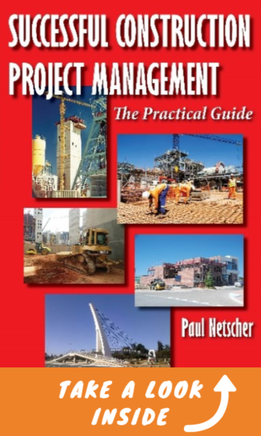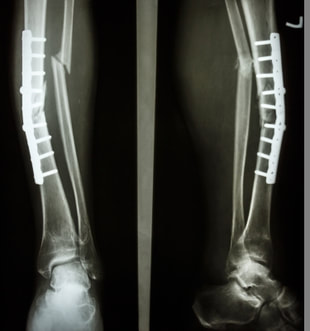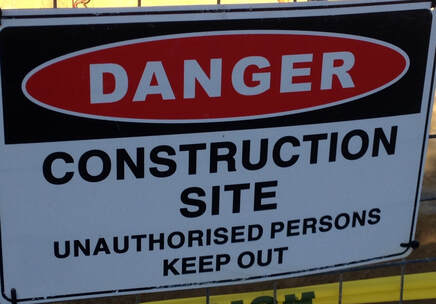"Have you had a worker die on your construction project, or visited a seriously injured worker in hospital?" The impacts of poor safety in constructionHave you had a worker die on your construction project? Have you visited a seriously injured worker in hospital? Maybe you’ve been injured yourself working in construction? What does it feel like? Some of us have had the misfortune of having serious accidents on our construction projects. It’s not pretty – and I’m not talking about the blood and mess. It’s the after effects, the disruption, the scars and loss left behind. #constructionsafety #constructionmanagement #constructionprojects Case study I was a Contract Director for a construction project in a remote part of Africa and while visiting the project, a scaffold that concreters were working on collapsed, resulting in a worker falling onto the broken timbers. A piece of wood penetrated the upper part of his inner thigh, which bled profusely. Fortunately the client had a full-time paramedic on the project, who treated the injured worker, before transferring him to the hospital an hour’s drive away. Since there was so much blood, I was concerned the worker would die, and since we were working in a foreign country, I was also worried about what could happen to us. I had visions of the local police arriving, arresting us, and locking us in the local prison. I had no illusions as to what conditions would be like there. It was certainly a scary thought for all of us. There was, however, a happy ending. The injury wasn’t as severe as it had appeared and the worker returned to work the next day. We were fortunate, since I’m sure if the piece of wood had pierced a major artery, which was probably only centimetres away, the outcome would have been very different. This accident could have happened in any country, and if the worker had died there was the possibility of the Project Manager and I both being jailed if found responsible for the death. In first world countries prisons may be slightly better than elsewhere, and the justice system may allow for a fair trial, however, the consequences of the Construction Project Manager being found responsible for the death of a worker, or member of public, on their project, is still possibly prison time, certainly a heavy monetary fine. Unfortunately very few Construction Project Managers understand this, and it’s probably the reason many don’t take safety as seriously as they should. But let’s put aside the direct consequences to you for a minute, and consider some of the other consequences of an accident on a construction project. What about the workers themselves? What about their families? Workers have an expectation, and a right, they’ll return home from your project in the same health as they started. Families expect to see their loved ones, and bread-winners, return from work at the end of the day, and you, the Construction Project Manager, have the duty of care to ensure this happens. Why do we have poor safety on construction projects?Over the years I have seen huge improvements in safety on construction projects. When I look back to my early years in construction, I shudder to think how we used to do things, and the risks we took with our own lives, and the lives of workers. Safety has changed for the better which means we can all sleep easier at night. How Has Construction Industry Safety Improved Over the Years? However, construction work is a hazardous business and accidents happen easily. In fact, I have often found accidents happen when we least expect them and even when the simplest tasks are being done. "Safety isn’t something that happens naturally." Safety isn’t something that happens naturally on construction projects. Just consider the recent maintenance tasks you did at home or in your garden, I’m sure if you analyse these, you’ll find you didn’t use the correct personal protective equipment, or follow proper safety procedures. I know I’m guilty of numerous safety breaches every time I work around the home and garden! (Most hospitals treat more injuries incurred from DIY projects in the home than other causes.) In fact, if you think about the last time you were driving, did you obey all the rules? When walking, do you stop at the traffic light and wait for it to turn in your favour, or are you impatient and cross as soon as you see a gap in the traffic? (No wonder there are so many injuries from motor vehicle accidents!) We’ve all done these things, so why should we expect to do things any differently at work? If you engage in unsafe behaviour outside the work place, the chances are that most of your workforce does the same thing. How you can improve safety on your construction project"Safety is not just about rules! Safety is about changing behaviour and changing mindsets, including your own." Many hate safety because all they see are rules, expenses and a drag on construction production. But safety is not just about rules! Safety is about changing behaviour and changing mindsets, including your own. And if you want to know about expense and disruption to a construction project, then have a serious accident and you’ll soon know about it! How poor safety costs your construction company money Anyway why should production come before people's lives? "Safety is a team effort that needs support from the whole management team and all the workers. To achieve this, the Project Manager has to lead the team – and lead by example." Safety on construction projects cannot be left entirely to the safety advisors, nor can it be driven only by the Project Manager. Safety is a team effort that needs support from the whole management team and all the construction workers. To achieve this, the Construction Project Manager has to lead the team – and lead by example. Who is responsible for safety on your construction project? Safety must be set-up properly from the start of the construction project, which should be scheduled and planned in such a way that the work can be done safely – the client’s deadlines and construction schedule should not dictate otherwise. Don’t let anyone be hurt on your construction project today. Thank you for reading this article. If you found it useful please like or share it. Please add your comments so we can all learn from your experiences.  (Written by Paul Netscher the author of the acclaimed books ‘Successful Construction Project Management: The Practical Guide’ and ‘Building a Successful Construction Company: The Practical Guide’. Both books are available in paperback and e-book from Amazon and other retail outlets. This article is adapted from information included in these books.To see how Paul can help you visit Construction Management Services ) © 2022 This article is not to be reproduced for commercial purposes without written permission from the author.
construction management construction project management
0 Comments
Leave a Reply. |
Archives
June 2024
Note: We welcome genuine comments, especially comments that add additional information to the subject matter in the article. We however reserve the right to remove inappropriate comments, which includes comments that have nothing to do with the subject, comments that include inappropriate language, and comments that are an advertisement for a product or company, or which include an advertising link. Comments must be in English. We will not enter into discussion on why a particular comment was removed.
CategoriesCopyright 2016 - The attached articles cannot be reproduced for commercial purposes without the consent of the author.
The opinions expressed in the attached articles are those of the writer. It should be noted that projects are varied and different laws and restrictions apply which depend on the location of the contractor and the project. It's important that the reader uses the supplied information taking cognisance of their particular circumstances. The writer assumes no responsibility or liability for any loss of any kind arising from the reader using the information or advice contained herein. "I have what I consider some of the best books on construction management."
Books are available from: Amazon.com Amazon.co.uk takealot.com kalahari.com Amazon.in Amazon.de Amazon.fr Amazon.it Amazon.com.au Powell's Fishpond uread bokus Amazon.ca Amazon.es Other retail stores Available in paperback or on Kindle "28 YEARS OF CONSTRUCTION PROJECT MANAGEMENT EXPERIENCE, DEVELOPING SUCCESSFUL CONSTRUCTION PROJECT MANAGERS AND BUILDING SUCCESSFUL CONSTRUCTION COMPANIES"
|





 RSS Feed
RSS Feed




